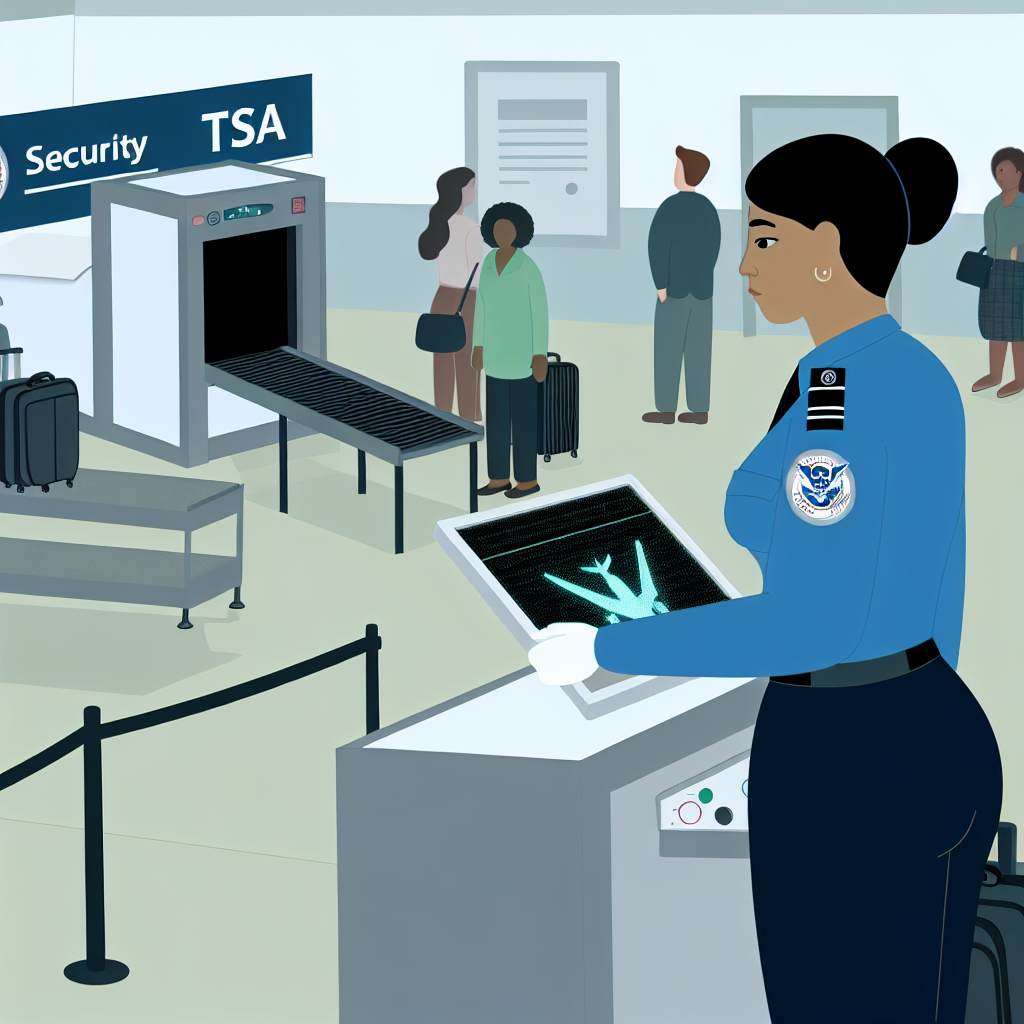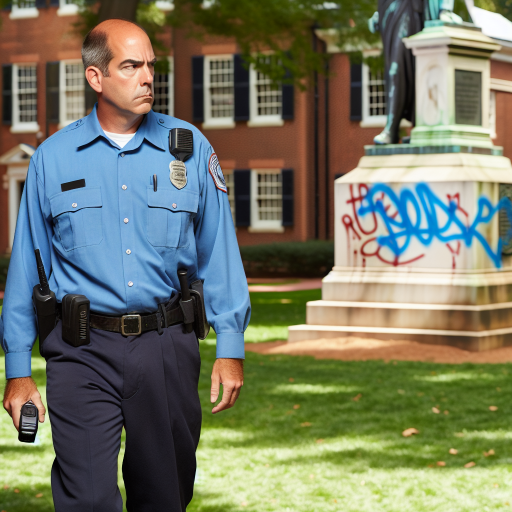Introduction
TSA officers play a crucial role in ensuring compliance with security regulations at airports.
Their primary responsibility is to ensure the safety of passengers and prevent any security threats.
By enforcing security regulations, TSA officers help to maintain safety and security at airports.
This is essential for the overall well-being of travelers and employees.
In this blog post, we will explore the key strategies and methods employed by TSA officers to ensure compliance with security regulations at airports.
Training and Qualifications of TSA Officers
When it comes to ensuring compliance with security regulations, the training and qualifications of TSA officers play a crucial role.
Let’s take a closer look at how these factors contribute to the effectiveness of TSA officers in enforcing security regulations.
Overview of the Rigorous Training Process for TSA Officers
TSA officers undergo a comprehensive training program that covers various aspects of security procedures and protocols.
This training includes classroom instruction, hands-on simulations, and on-the-job training at airports.
During their training, officers learn how to use security screening equipment, identify prohibited items, and handle different security scenarios.
They also receive training on communication skills, conflict resolution, and customer service to ensure smooth interactions with passengers.
Overall, the training process is designed to equip TSA officers with the knowledge, skills, and confidence they need to effectively enforce security regulations and keep air travel safe.
Importance of Continuous Education and Updates on Security Procedures
Security threats are constantly evolving, which is why it’s crucial for TSA officers to stay updated on the latest security procedures and protocols.
Continuous education and training are essential to ensure that officers are equipped to handle new threats and challenges effectively.
TSA officers undergo regular refresher courses and training sessions to stay informed about changes in security procedures, emerging threats, and best practices in security enforcement.
This ongoing education helps officers stay sharp and prepared to respond to any security situation that may arise.
By staying current with their training and education, TSA officers can adapt to new security challenges and ensure that they are enforcing regulations to the highest standard at all times.
How Qualifications and Training Contribute to Officers’ Ability to Enforce Regulations Effectively
The qualifications and training that TSA officers receive are directly correlated with their ability to enforce security regulations effectively.
Here are some ways in which these factors contribute to officers’ effectiveness:
- Understanding of Security Protocols: Through their training, officers develop a deep understanding of security protocols and procedures, which enables them to identify potential threats and take appropriate action.
- Confidence and Competence: Training instills confidence in officers and equips them with the skills they need to handle security challenges with competence and professionalism.
- Adaptability: Continuous education allows officers to adapt to new security threats and changes in procedures, ensuring that they can respond effectively to evolving security risks.
- Compliance with Regulations: Qualifications and training ensure that officers are well-versed in security regulations and have the knowledge and skills to enforce them consistently.
- Professionalism: By undergoing rigorous training, officers learn how to conduct themselves professionally and handle security situations with integrity and respect.
The training and qualifications of TSA officers are essential components of their ability to ensure compliance with security regulations.
Transform Your Career Today
Unlock a personalized career strategy that drives real results. Get tailored advice and a roadmap designed just for you.
Start NowThrough rigorous training and continuous education, officers are equipped to handle security challenges effectively and keep air travel safe for all passengers.
Screening procedures at airports
When passengers arrive at an airport, they are required to go through a series of screening procedures to ensure the safety and security of everyone on board the aircraft.
Explanation of the screening process passengers go through
Passengers first have to present their identification and boarding pass to TSA officers before proceeding to the security checkpoint.
At the checkpoint, passengers are required to remove their shoes, belts, jackets, and other bulky items to be screened separately.
Passengers also have to place their carry-on bags, laptops, and personal belongings on the conveyor belt to undergo X-ray screening.
Any items that raise suspicion or cannot be identified through the X-ray scan will be subject to further inspection by TSA officers.
Role of TSA officers in conducting thorough screenings
TSA officers play a crucial role in conducting thorough screenings to identify and prevent potential security threats.
They are trained to use various screening tools and techniques to detect prohibited items, such as weapons or explosives, hidden in passengers’ belongings.
Additionally, TSA officers are responsible for operating security equipment, such as X-ray machines and body scanners, to ensure that all passengers are properly screened before boarding their flights.
They are trained to follow specific protocols and guidelines to maintain the highest level of security at airports.
Importance of following specific guidelines and protocols to detect potential threats
Following specific guidelines and protocols is essential to detecting potential threats and maintaining the safety of travelers.
TSA officers are required to adhere to strict procedures to ensure that no prohibited items are brought onto aircraft.
By following specific guidelines and protocols, TSA officers can efficiently detect and respond to security threats, ensuring that all passengers are safe during their travel.
Any deviation from these guidelines can result in security breaches and potential risks to passengers’ safety.
Significance of TSA’s Screening Procedures
TSA officers play a vital role in ensuring compliance with security regulations at airports.
Their efforts are crucial in maintaining the safety and security of air travel for all passengers.
See Related Content: Top Forensic Science Cases in History
Use of Technology and Equipment
Technology plays a crucial role in ensuring that TSA officers are able to comply with security regulations effectively.
By utilizing advanced technology and equipment, TSA officers are able to enhance security measures and improve the overall screening process.
Overview of Advanced Technology and Equipment
TSA officers rely on a wide range of cutting-edge technology and equipment to ensure the safety and security of passengers and their belongings.
Transform Your Career Today
Unlock a personalized career strategy that drives real results. Get tailored advice and a roadmap designed just for you.
Start NowThese tools help officers detect prohibited items and potential threats, allowing them to take necessary action to prevent any risks.
- X-ray Machines: One of the most commonly used tools in airport security, X-ray machines are used to scan carry-on luggage to identify any suspicious items that may pose a threat.
- Explosive Trace Detection (ETD) Systems: These systems are deployed to detect traces of explosives on surfaces of items or individuals, providing an additional layer of security.
- Advanced Imaging Technology (AIT): AIT scanners use millimeter wave technology to create a detailed image of a passenger’s body, helping officers detect concealed items or weapons.
- Walk-Through Metal Detectors: Metal detectors are used to screen individuals for metallic objects that could potentially be used as weapons.
How Technology Enhances Security Measures
The use of technology in security screening procedures has revolutionized the way TSA officers operate, enabling them to detect threats more efficiently and effectively.
By leveraging advanced tools and equipment, officers can ensure that security regulations are strictly adhered to, minimizing the risk of any security breaches.
- Rapid Screening: Advanced technology allows for faster and more accurate screening processes, reducing wait times for passengers while maintaining high levels of security.
- Enhanced Detection Capabilities: Technologies such as AIT scanners and ETD systems provide officers with enhanced detection capabilities, enabling them to identify potential threats that may not be visible through traditional screening methods.
- Improved Training and Performance: Training programs for TSA officers are designed to ensure proficiency in operating the latest security technologies, enhancing their performance and ability to detect security threats effectively.
Examples of Specific Tools and Devices Used in Screening Processes
Here are some specific examples of tools and devices used by TSA officers in the screening process:
- Handheld Metal Detectors: Used to scan individuals for hidden metallic objects that may trigger alarms on walk-through metal detectors.
- Explosive Detection K9 Units: Specially trained dogs are used to detect explosives in luggage and cargo, providing an additional layer of security.
- Body Scanners: These devices create a detailed image of a passenger’s body to detect any concealed items that may pose a threat to security.
- Baggage Inspection Systems: Automated systems are used to scan checked luggage for prohibited items or potential threats, allowing officers to identify and intercept any security risks.
Overall, the use of advanced technology and equipment by TSA officers is essential in maintaining a high level of security at airports and ensuring compliance with security regulations.
By leveraging cutting-edge tools and devices, TSA officers can effectively detect and mitigate security threats, providing a safe and secure travel environment for passengers.
You Might Also Like: Ethics and Integrity in the Secret Service Profession
Communication and coordination among TSA officers
Clear communication and coordination among TSA officers play a crucial role in ensuring compliance with security regulations.
Effective communication helps in coordinating efforts, sharing vital information, and ultimately enhancing security measures at airports and other transportation hubs.
Importance of clear communication among officers
Clear communication is essential for TSA officers to work efficiently and effectively.
It ensures that all team members are on the same page regarding security protocols, potential threats, and any other critical information.
By maintaining open lines of communication, officers can respond promptly to security incidents and prevent potential security breaches.
How teamwork and coordination contribute to improving security
Teamwork and coordination among TSA officers are essential for maintaining a high level of security at airports.
When officers work together seamlessly, they can cover more ground, respond quickly to security threats, and prevent security vulnerabilities.
By coordinating their efforts, TSA officers can create a unified front against potential security risks and unauthorized access.
Examples of effective communication strategies used by TSA officers
TSA officers utilize various communication strategies to ensure compliance with security regulations. Examples of effective communication strategies include:
- Regular briefings and debriefings to share important security updates and information.
- Utilizing radios and other communication devices to stay in constant contact with fellow officers.
- Implementing a clear chain of command to streamline communication and decision-making processes.
- Conducting regular training sessions to practice effective communication techniques during security incidents.
- Establishing clear protocols for responding to security threats and emergencies.
Clear communication and coordination among TSA officers are essential for ensuring compliance with security regulations and maintaining a high level of security at airports.
By working together as a cohesive team and utilizing effective communication strategies, TSA officers can effectively respond to security threats, prevent security breaches, and protect the safety of passengers and personnel.
Learn More: Physical Fitness Requirements for Security Agents
Handling non-compliant passengers
Dealing with non-compliant passengers can be one of the biggest challenges for TSA officers.
Transform Your Career Today
Unlock a personalized career strategy that drives real results. Get tailored advice and a roadmap designed just for you.
Start NowSome passengers may not understand the regulations or may intentionally choose not to follow them.
This can create delays and potentially compromise security measures.
Challenges TSA officers may face with passengers not complying with regulations
TSA officers are trained to handle non-compliant passengers effectively and efficiently.
They follow specific protocols and procedures to address such situations.
This may involve explaining the regulations clearly, conducting additional screenings, or escalating the issue to a supervisor if necessary.
Protocols and procedures for dealing with non-compliant individuals
It is crucial for TSA officers to maintain professionalism when dealing with non-compliant passengers.
They must enforce regulations firmly but fairly, ensuring that all passengers are treated with respect and dignity.
This helps maintain security standards while also providing a positive passenger experience.
Learn More: Forensic Scientist: Career Path and Education Guide

Training and Readiness for Emergencies
Preparation of TSA officers for emergency situations.
- TSA officers undergo rigorous training to prepare for various emergency scenarios.
- Training includes simulated emergencies such as bomb threats, active shooters, and natural disasters.
- Officers learn proper procedures for handling different types of emergencies to ensure passenger safety.
Importance of quick response and decision-making in critical incidents.
- During emergencies, quick response time can save lives and minimize damage.
- TSA officers need to make split-second decisions to effectively respond to critical incidents.
- Proper training and regular drills help officers hone their decision-making skills under pressure.
How training drills and simulations enhance officers’ readiness.
- Regular training drills help TSA officers stay prepared for any emergency situation.
- Simulated scenarios allow officers to practice their response procedures in a controlled environment.
- By participating in drills and simulations, officers can identify areas for improvement and address them proactively.
Training and readiness for emergencies are essential components of TSA officers’ preparation to ensure compliance with security regulations.
By continuously improving their skills through drills and simulations, officers can effectively respond to critical incidents and maintain a safe travel environment for passengers.
Monitoring and Compliance Audits
Monitoring and compliance audits are integral aspects of ensuring that TSA officers are complying with security regulations.
Regular monitoring of officers’ performance and adherence to regulations is essential to maintain the highest level of security at airports and other transportation hubs.
By keeping a close eye on how officers carry out their duties, any deviations from established protocols can be quickly identified and corrected.
One method used to ensure compliance with security regulations is conducting compliance audits.
These audits involve a thorough review of all procedures followed by TSA officers to ensure they are being executed correctly and in line with security protocols.
By conducting these audits regularly, any weaknesses or areas that need improvement can be identified and addressed promptly.
Transform Your Career Today
Unlock a personalized career strategy that drives real results. Get tailored advice and a roadmap designed just for you.
Start NowFeedback and evaluation play a crucial role in improving officers’ performance and overall security measures.
By providing feedback on their performance, officers can understand where they need to improve and make adjustments accordingly.
Evaluating their performance against established standards helps to ensure that officers are consistently meeting the requirements set forth by security regulations.
Monitoring and compliance audits are vital components of ensuring that TSA officers are complying with security regulations.
By closely monitoring their performance, conducting audits, and providing feedback, security measures can be strengthened, and the overall safety of travelers can be enhanced.
- Regular monitoring of TSA officers’ performance and adherence to regulations.
- Conducting compliance audits to ensure all procedures are followed correctly.
- How feedback and evaluation help improve officers’ performance and security measures.
TSA Security Roles and Responsibilities
TSA officers are responsible for enforcing security regulations at airports.
They conduct thorough checks on passengers and luggage to ensure compliance.
These officers play a crucial role in maintaining airport security and preventing potential threats.
It is important for passengers to cooperate with TSA officers to ensure safety.
We should appreciate and support the hard work of TSA officers in keeping us safe.
Let us all do our part in ensuring a safe and secure travel experience for everyone.
Additional Resources
Transportation Security Administration | Transportation Security …




